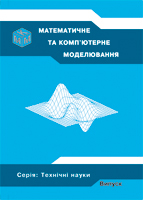ПРОГНОЗУВАННЯ ВОЛОГОСТІ НЕНАСИЧЕНОЇ ЗОНИ ҐРУНТУ НА ОСНОВІ NEO-FUZZY МЕРЕЖІ
DOI:
https://doi.org/10.32626/2308-5916.2012-6.170-176Ключові слова:
ґрунт, сільськогосподарські культури, вологість, всмоктуючий тиск ґрунту, нейронна мережа, опади, дефіцит вологості повітря, рівень ґрунтових вод.Анотація
У даній роботі вирішується задача прогнозування вологості ненасиченої зони ґрунту на керованому модулі меліоративної системи двосторонньої дії з підґрунтовим зволоженням за допомогою neo-fuzzy нейронних мереж.Посилання
Науково-методичні та організаційні засади управління водогосподарськомеліоративними об‘єктами гумідної зони України за короткотерміновим метеорологічним прогнозом. Методичні рекомендації / [А. М. Рокочинський, Я. Я. Зубик, Л. В. Зубик, Є. І. Покладньов ; за участю спеціалістів Держводгоспу України В. А. Сташук, В. Д. Крученюк]. — Рівне : НУВГП, 2005. — 53 с.
Системна оптимізація водокористування при зрошенні : монографія / [П. Ковальчук, Н. Пендак, В. Ковальчук, М. Волошин]. — Рівне : НУВГП, 2008. — 204 с.
Леоненков А. Нечёткое моделирование в среде Matlab и fuzzyTech / А. Леоненков. — СПб. : БХВ-Петербург, 2005. — 719 с.
Jang J.-Sh. R. Neuro-Fuzzy and Soft Computing / J.-Sh. R. Jang, Ch.-T. Sun, E. Mizutani. — Upper Saddle River, NJ : Prentice Hall, 1997. — 514 p.
##submission.downloads##
Опубліковано
Номер
Розділ
Ліцензія
Authors who publish with this journal agree to the following terms:- Authors retain copyright and grant the journal right of first publication with the work simultaneously licensed under a Creative Commons Attribution License that allows others to share the work with an acknowledgement of the work's authorship and initial publication in this journal.
- Authors are able to enter into separate, additional contractual arrangements for the non-exclusive distribution of the journal's published version of the work (e.g., post it to an institutional repository or publish it in a book), with an acknowledgement of its initial publication in this journal.
- Authors are permitted and encouraged to post their work online (e.g., in institutional repositories or on their website) prior to and during the submission process, as it can lead to productive exchanges, as well as earlier and greater citation of published work (See The Effect of Open Access).

